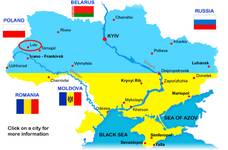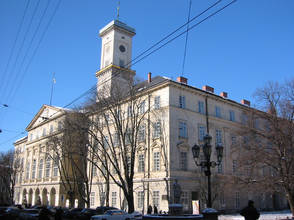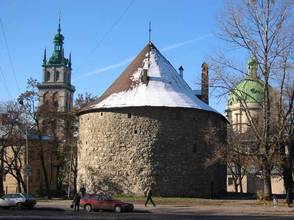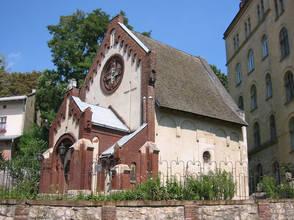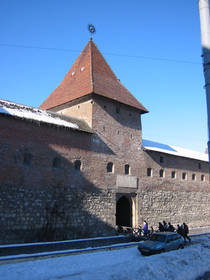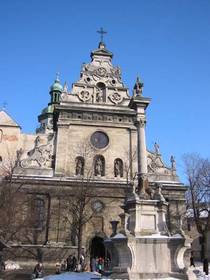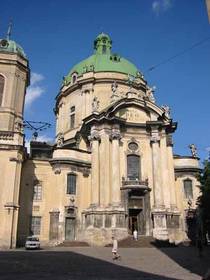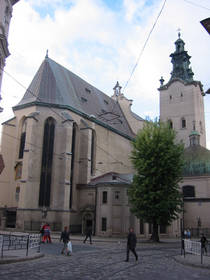WELCOME TO LVIV!
|
Welcome to the city of Lviv! Unforgettable vistas of our city, its architecture and European traditions have created a legend and today modern Lviv is characterized by exquisite art, rich folk traditions, a mixture of many nations, warm hospitality, thriving business activity and, of course, a warm welcome for tourists. The central part of the city is now designated as a historic architectural reservation and over half of all architectural monuments within Ukraine is located here. The grey stones of Lviv reflect a diversity of styles and beginning in the 13th century, you may rapidly journey through the Middle Ages, Renaissance, Classicism and Secession.
Our historic Lviv, known as the city of sleeping lions, went through numerous battles, invasions, fires and floods, but finally it has been rebuilt with a new attractiveness.
People who have visited Lviv often find themselves drawn back again, almost as though by some magic power.
But Lviv speaks for itself better than anything that has been written about it. This is a museum-town in the open air, where dreams can come true and it creates an unforgettable impression on all its visitors. And not just because of its grand 'age of 750, but because it has a soul…
Throughout its long history the city has been known by many different names in various times and in different languages. In Ukrainian it is "Lviv", in Latin — “Leopolis” in Greek — "Leontopolis", in German -"Lowenburg" and in Polish — "Lwow". All these words have the same root meaning "lion", the king of the animal world, and the image of the lion has always formed an important part of the city's coat of arms Danylo, King of Halychyna (Galicia) and the founder of the city, inspired Lviv with his royal leadership, being at the same time merciful and generous, severe and stern, and he named it after his son Lev (Leo). Since the very first days of its existence the city with its sincere and kind-hearted Slavonic Ukrainian inhabitants has attracted merchants and craftsmen from all over Europe, many of whom, enchanted by the beauty of the city, decided to settle here permanently. In medieval times one could hear almost any language of the world in Lviv. Many Armenian merchants settled in Lviv in medieval times, trading in jewellery with the East and Tatar craftsmen, Jews and Karaites traded here too. Talented Master Builders soon followed the merchants and brought with them some new creative ideas in architecture and the arts. Getting to know local culture and co-operating with Ukrainian architects, they created some unique architectural combinations. Hand-in-hand with a Ukrainian master, an Italian architect worked devotedly on building up the town and embodied Renaissance and Baroque traditions from his motherland into Lviv architecture. Due to his profitable trading business a Greek from Cyprus not only built himself a magnificent mansion in the central city square, but also financed the construction of the largest tower in Lviv, which nowadays is called Korniakt's Tower. Martin Grueneweg from Germany lived in Lviv for only 20 years from 1582, but he left a valuable source of historic facts in a book titled "Description of the city of Lviv", in which he called the city a 'summerhouse in the middle of Paradise'.
Over the centuries Lviv has always provided a warm welcome for all its guests, each of them bringing various different products of their civilisations to the city, as well as their national characteristics: German deal, Italian vigour, English merchant's wisdom, Polish humour. They all brought a piece of their motherland and left it here for future generations. So today's international tourists can enjoy unique Ukrainian culture in the city, yet probably find some aspect of that, what will remind them home. And that is part of the secret of why visitors feel as comfortable here as they do in their home countries. So Lviv is not only well worth of visiting - it is worth of coming back to see again and again.
Modern Lviv, occupying an area of 171 sq. km. with a population of 760 thousand, is an important political, cultural and scientific centre of Ukraine. It is situated close to the northwestern border of the country in the foothills of the Carpathians, where the main European watershed, dividing the rivers of Baltic and Black Sea basins, passes. Vysokiy Zamok (High Castle) is the highest point of the city (413 m. above sea level) and The Poltva River (a tributary of the Western Boog), on the banks of which the city was originally built, now actually runs underground through the centre of the city.
The climate of Lviv was best described in the 17th century by a Turkish traveller saying: "With such a local salubrity of climate, ladies are so beautiful that while seeing them so cheerful wearing silky colourful clothes, with eyes of a doe, any man could loose his head". And so it is today!






